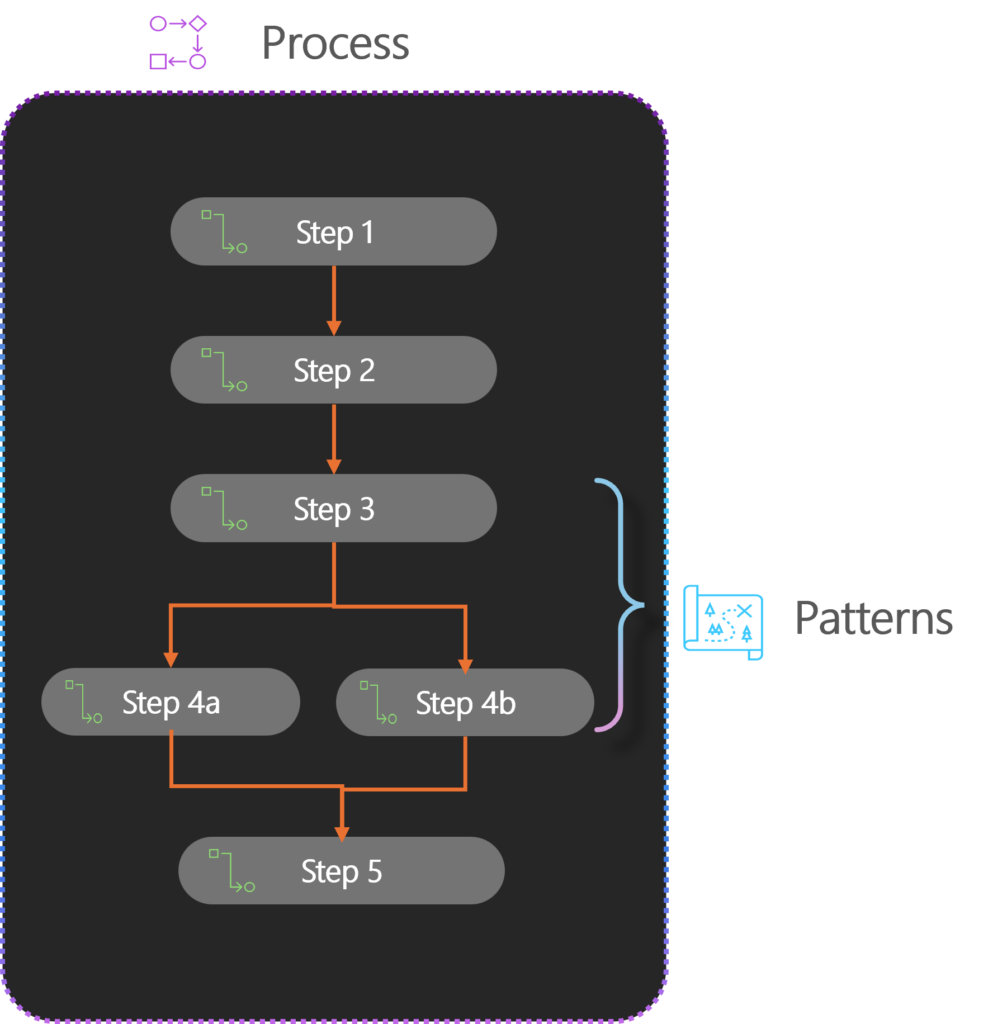As organizations look to enhance efficiency and decision-making, the integration of AI into business processes has become increasingly important. The new Process Framework for Microsoft Semantic Kernel empowers developers to seamlessly embed AI into their workflows, providing a structured approach to optimizing daily operations.
Not sure what a business process is? A Process is a structured sequence of activities or tasks that deliver a service or product, adding value in alignment with specific business goals for customers.
The Process Framework enables the fusion of AI directly into various business processes. It allows developers to create intelligent workflows that can adapt and learn, significantly enhancing operations such as customer support, project management, and more. Let’s learn about the core concepts.
Core Concepts
Understanding the three foundational components of the Process Framework is essential:
- Process: A structured collection of steps designed to achieve a specific business goal. For example, the process of customer onboarding can aggregate various tasks such as account creation, credit checks, and welcome communications.
- Step: An individual task within the process that has defined inputs and outputs. Each step performs specific functions, such as invoking user-defined Kernel Functions to carry out its work. This means a step can be code-only, call APIs, leverage AI Agents (via the SK Agent Framework [.NET | Python]) and even be Human-in-the-loop or a mix of any/all of these!
- Pattern: The sequence type that dictates how steps are executed. Patterns can standardize common workflows, making it easier to implement frequent operations. Examples include Fan In, Fan Out, Cycle and Map Reduce which help manage input and output flows effectively.
Key Features
A significant advantage of the Process Framework is its foundation on Semantic Kernel. Organizations already invested in Semantic Kernel can utilize their existing functions within new processes, leading to enhanced capabilities without the need for substantial redevelopment efforts. The Process Framework is designed for scalability, whether deployed on-premises or in the cloud. It supports both local development environments and robust cloud infrastructure.
Process Framework leveraging runtimes like Microsoft Orleans and Dapr and allows organizations to manage workloads effectively while ensuring high availability and responsiveness. With its event-driven architecture, the framework can handle complex workflows, such as customer support ticket resolution that involves multiple subprocesses.
Process and Steps are both stateful leveraging the runtimes above to enable long running tasks and both can be reused across multiple Processes. Because this is built for enterprises – you have Open Telemetry throughout, and the Process can be auditable as needed.
Real-World Examples
To illustrate how the Process Framework can be effectively deployed, consider these scenarios:
- Account Opening: The process could include steps like conducting a credit check, creating the account in core systems, and sending a welcome email to the customer. Each of these tasks can be represented as steps within the overarching process.
- Food Delivery: Involves steps such as receiving the order from various platforms (phone, website, app), preparing food items, conducting quality control, and managing driver assignments. By integrating AI, these steps can improve logistics and delivery response times.
- Support Ticket Resolution: This process can be dynamic, adapted based on customer requirements and business goals, utilizing steps to efficiently track and resolve issues while ensuring customer satisfaction.
Get Started
To begin utilizing the Process Framework, explore the .NET samples available on GitHub. These samples serve as a foundational resource for understanding how to implement the framework into your applications. You can also learn more by checking out the Process Framework learning content.
We can’t wait to hear about the business value you can bring by using the framework! Embrace this opportunity to redefine your workflows and discover what’s possible with AI-driven processes.
Please reach out if you have any questions or feedback through our Semantic Kernel GitHub Discussion Channel. We look forward to hearing from you! We would also love your support, if you’ve enjoyed using Semantic Kernel, give us a star on GitHub.



Super cool, I think this opens a big door to a huge set of limitless applications…